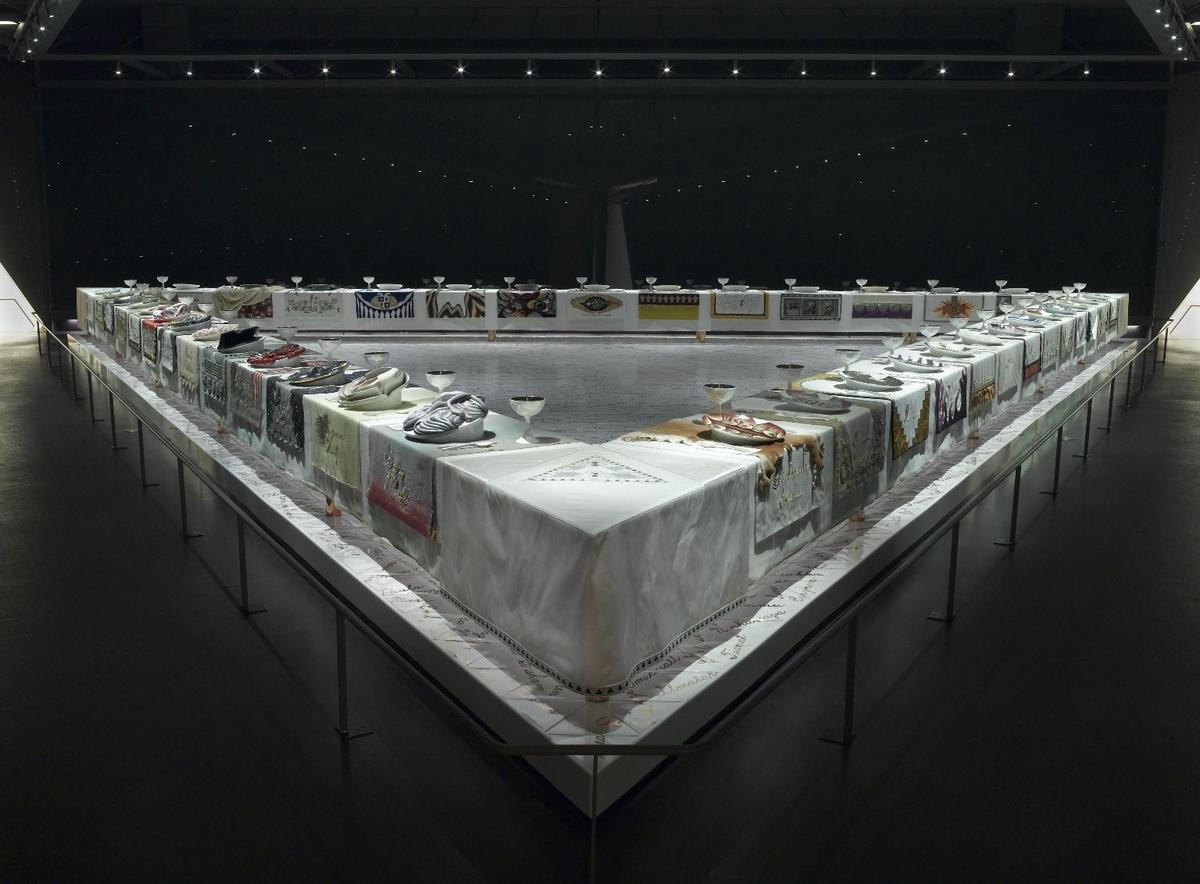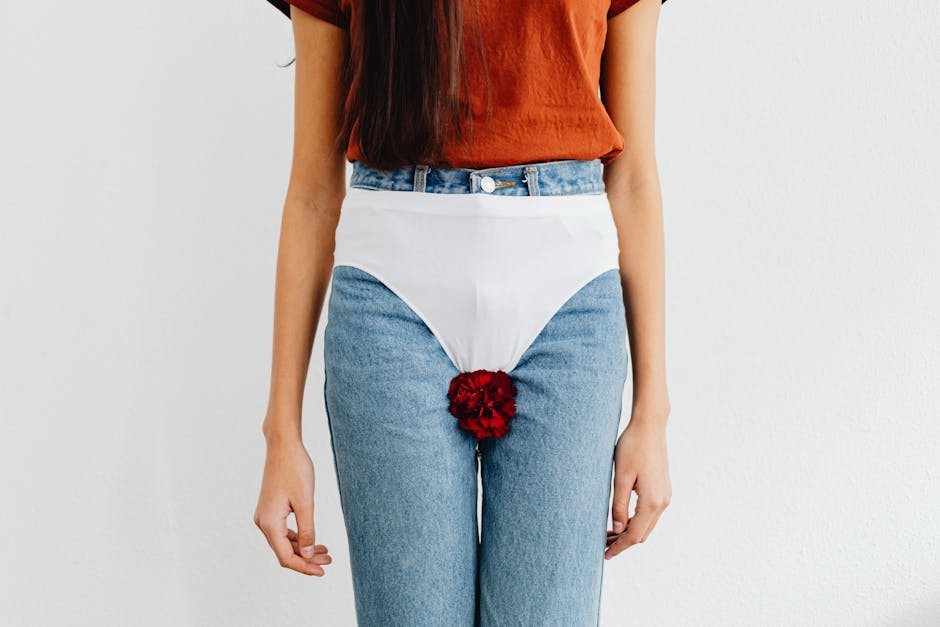Historical Context of Feminist Art
The late 1960s and early 1970s saw feminist art emerge as a powerful force for change. Amidst social activism and protests, feminist artists challenged traditional narratives and gave voice to marginalized perspectives.
Judy Chicago's The Dinner Party celebrated women's achievements, rewriting male-centric history. Miriam Schapiro pioneered the use of textiles in art, challenging the hierarchy between craft and high art. The Guerrilla Girls used humor and bold statements to highlight injustices in the art world.
Virginia Woolf's A Room of One's Own advocated for women's creative autonomy, influencing art spaces. Faith Ringgold addressed civil rights through story quilts, redefining art and narrating African American women's experiences.
This era marked a shift where art became a vessel for activism—artivism—blurring lines between protest and performance. Feminist artists not only created compelling works but also shaped social discourse, envisioning a world where art catalyzed thought and transformation.
Influential Feminist Artists
Judy Chicago, Kara Walker, and Shirin Neshat have been pivotal in shaping feminist art, each bringing unique perspectives to the movement.
Judy Chicago's vibrant installations reclaim women's history. Her work The Dinner Party honors trailblazing women, inviting viewers to reflect on whose stories are celebrated and why.
Kara Walker's art delivers a nuanced commentary on America's racial history. Her silhouettes and installations, like A Subtlety, confront viewers with the legacies of slavery and discrimination, sparking important dialogues about race and power.
Shirin Neshat explores Muslim women's identities through visually striking works. Her Women of Allah series uses photography and calligraphy to challenge stereotypes and invite understanding of the complexities of culture, politics, and gender.
These artists don't just create; they provoke thought and inspire change. By championing diverse voices and challenging entrenched systems, they've shown that art can be a powerful tool in the fight for equality.

Art as Activism
Feminist artists often use their work as a form of activism, or "artivism," addressing social issues and pushing for change. This approach merges creativity with advocacy, turning art into a catalyst for dialogue and reform.
The Guerrilla Girls exemplify this, using humor and striking visuals to highlight gender and racial disparities in the art world. Their work transforms viewers into active participants in the fight for inclusivity.
Kara Walker's evocative installations educate as well as provoke, compelling audiences to confront racial violence and historical trauma. Her work encourages systemic change through increased awareness.
Shirin Neshat's art speaks to the global struggle for women's rights, challenging perceptions of Muslim women and advocating for greater cultural understanding. Her films and photographs blend artistic beauty with potent political messages.
Artivism extends beyond galleries into streets and communities, making art more accessible and relatable. By doing so, it brings issues like gender inequality, racial injustice, and cultural repression to the forefront of public discourse.
These artists remind us that art is not passive; it's a dynamic force capable of challenging oppressive systems and fostering a more equitable society.
Intersectionality in Feminist Art
Intersectionality in feminist art acknowledges how overlapping identities—such as race, gender, sexuality, and class—create distinct experiences of oppression and privilege. This approach has transformed feminist art, making it more diverse and resonant.
Artists embracing intersectionality provide a nuanced depiction of reality, challenging singular narratives and highlighting the interconnectedness of social struggles. Their work underscores the importance of inclusivity within artistic movements.
- Carrie Mae Weems's photography, like her "Kitchen Table Series," explores the intersections of race, gender, and class, inviting viewers to reconsider assumptions about African American women's experiences.
- Njeri Kinuthia uses her Kenyan heritage to examine gender and culture globally, critiquing traditional norms that shape women's identities and roles. Her work creates a visual dialogue that engages audiences with complex cultural stories.
- Zanele Muholi focuses on the LGBTQ+ community in South Africa, capturing the resilience of black queer bodies. Their portraits assert presence and pride in the face of systemic erasure.
Incorporating intersectionality in feminist art is revolutionary. It recognizes how different forms of discrimination overlap and reinforces the need for inclusive representation. When art embraces the full breadth of identity, it becomes a powerful catalyst for empathy, understanding, and justice.

Contemporary Feminist Art Practices
In today's art world, feminist artists continue to push boundaries and explore new ways of expressing gender, identity, and power. The current wave of feminist art blends traditional and new media, using technology to expand artistic expression and activism.
Contemporary feminist artists are tapping into digital tools and platforms to breathe new life into their messages. Virtual reality (VR) and augmented reality (AR) allow artists to create immersive experiences that challenge sociocultural perspectives and invite audiences to reflect on complex themes.
Digital artist Tabita Rezaire exemplifies this shift with her use of the internet to explore intersections of race, gender, and colonial history. Her work Deep Down Tidal (2017) immerses viewers in digital landscapes that critique Western dominance and promote healing.
Social media platforms have become powerful canvases for feminist art. Amalia Ulman's Instagram performance Excellences & Perfections (2014) blurred the line between personal story and public engagement, examining female stereotypes and societal expectations in real-time.
Artists are also exploring the use of algorithms and artificial intelligence (AI) to address biases in our digital landscapes. Heather Dewey-Hagborg's Stranger Visions creates 3D sculptures from genetic data found in public spaces, sparking dialogues about identity, surveillance, and privacy.
In performance art, artists like Sondra Perry are incorporating live interactions with technology to critique race and gender. Perry uses motion capture and video installation to create immersive, visually compelling works that challenge conventional narratives.
This fusion of art and technology expands the possibilities of feminist art, creating interactive and evolving experiences. Contemporary feminist artists remind us that art is a living examination of our world, embedding current issues within the technologies that shape our lives.
Feminist art continues to be a catalyst for change and reflection. By challenging norms and amplifying diverse voices, these artists inspire dialogue and foster understanding, showing that art remains a powerful force for justice and equality.
"I set out to change the world and to articulate the specific experiences of women." – Judy Chicago
Key Themes in Contemporary Feminist Art:
- Intersectionality and identity
- Digital activism and social media
- Body politics and representation
- Environmental feminism
- Transnational feminist perspectives
As the movement evolves, feminist artists continue to adapt their practices, ensuring their voices resonate in an ever-changing cultural landscape. Through their work, they not only critique existing power structures but also envision and create new possibilities for a more equitable future.






















